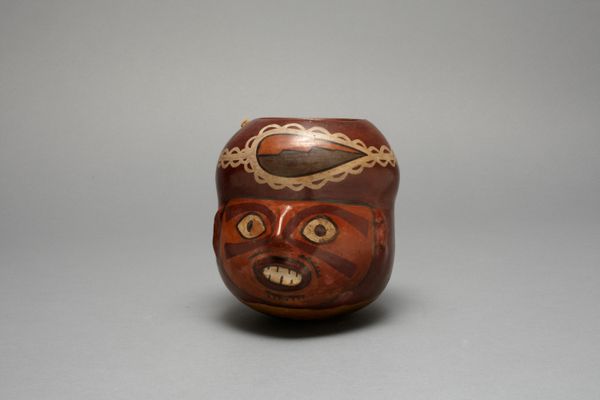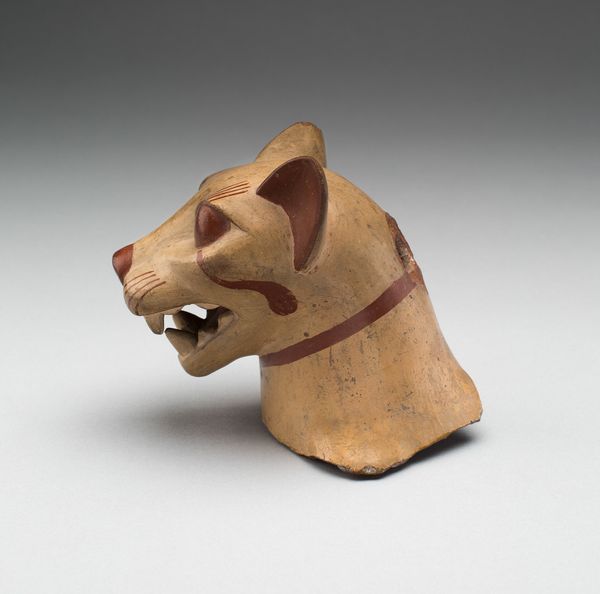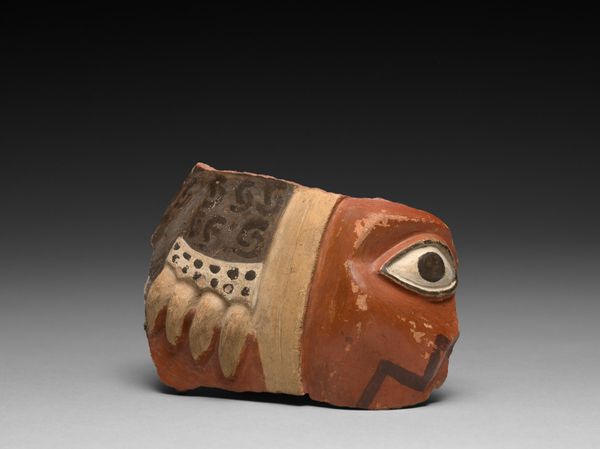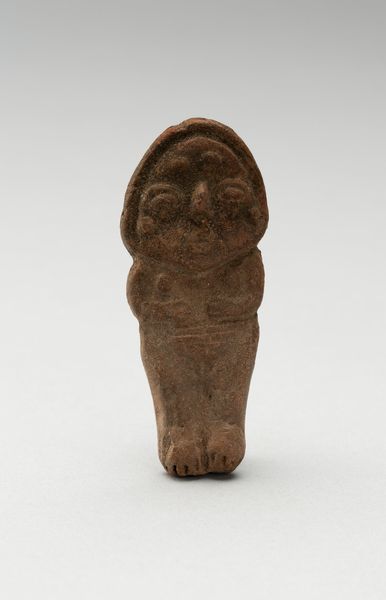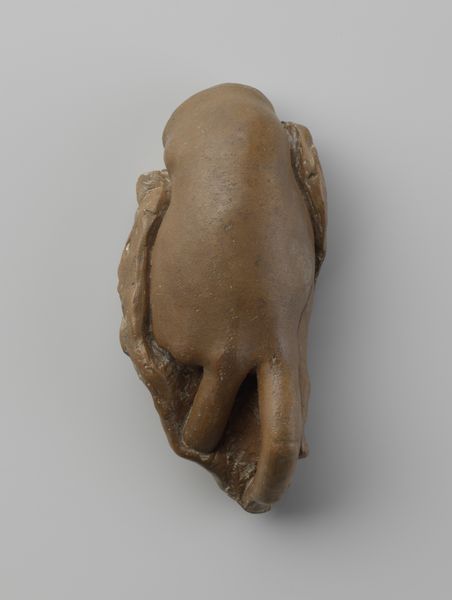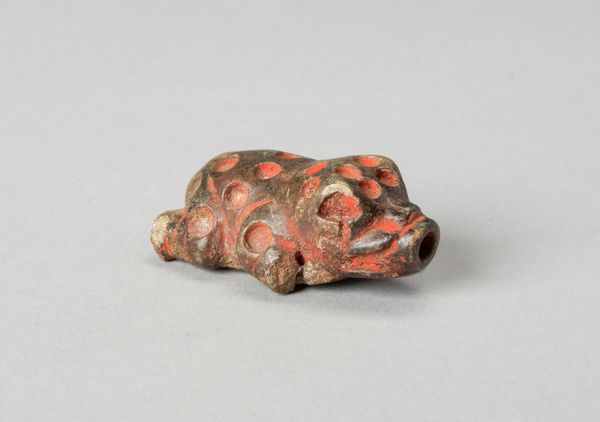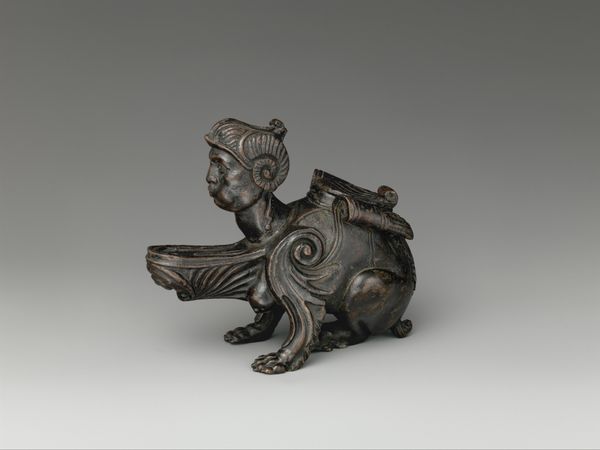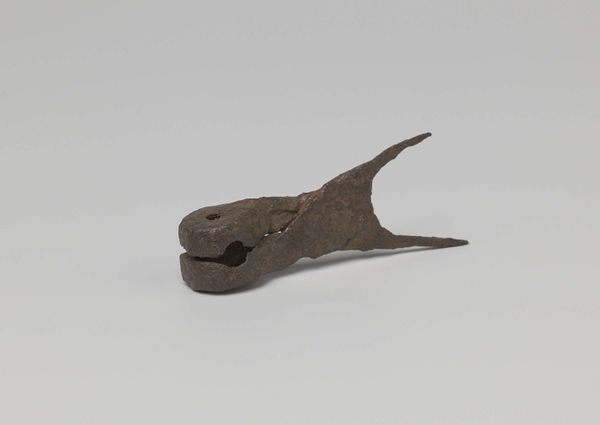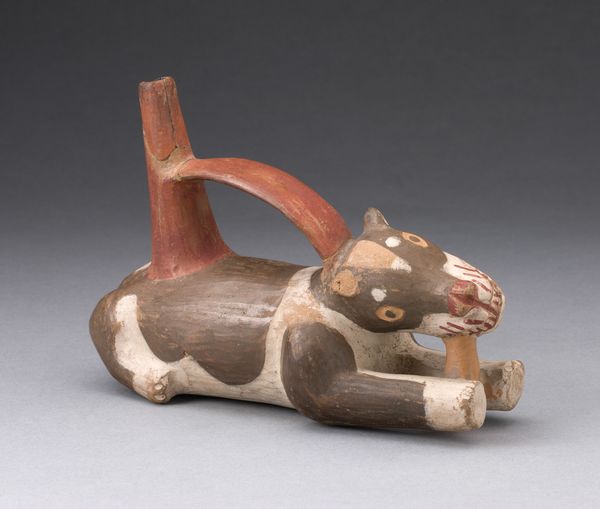
sculpture, wood
#
asian-art
#
japan
#
figuration
#
form
#
sculpture
#
24_meiji-period-1868-1912
#
wood
#
miniature
Dimensions: H. 1 1/2 in. (3.8 cm); W. 2 in. (5.1 cm); L. 4 3/4 in. (12.1 cm)
Copyright: Public Domain
This bamboo tea scoop in the shape of a cicada was crafted by Hayakawa Shōkosai I in nineteenth-century Japan. The cicada, far more than a mere insect, is rich with symbolic weight. Across cultures and epochs, the cicada symbolizes rebirth, resurrection, and immortality, shedding its skin as it transforms. We can trace this motif back to ancient Greece, where the cicada, or "tettix," was a symbol of music and poetry, dedicated to Apollo and the Muses. The Greeks, much like the Japanese, saw the cicada as a creature that bridged the earthly and divine realms. Consider how the Egyptians revered the scarab beetle, another insect associated with transformation and eternal life, pushing the sun through the sky, embodying themes of renewal and persistence. This symbol resonates in our collective memory, a testament to the human fascination with life's cyclical nature. This motif is not merely aesthetic, but a powerful force, tapping into our primal understanding of life, death, and the promise of renewal.
Comments
No comments
Be the first to comment and join the conversation on the ultimate creative platform.
